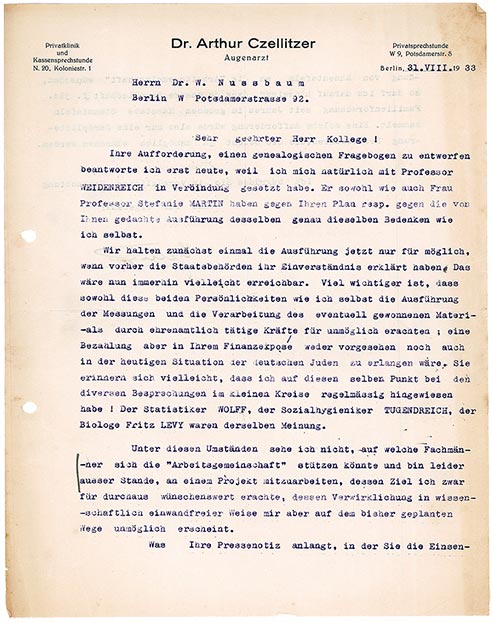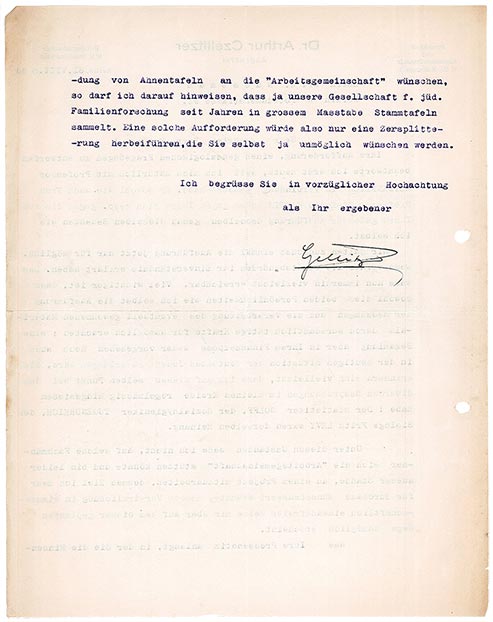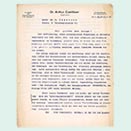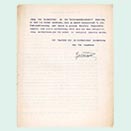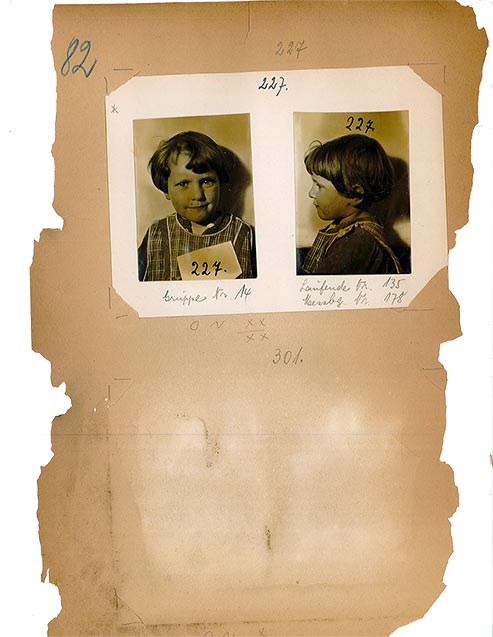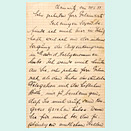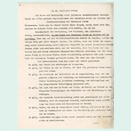Thursday
31 August 1933
Letter from Arthur Czellitzer to Wilhelm Nussbaum, founder of the Organization for Jewish Genetic Research and Eugenics
In August of 1933, the Berlin gynecologist Dr. Wilhelm Nussbaum (1908–1975) formally founded Die Arbeitsgemeinschaft für jüdische Erbforschung und Eugenik (Organization for Jewish Genetic Research and Eugenics). Having been interested in questions pertaining to race and eugenics since his university studies, he proposed to examine more than 1,000 Jews in order to gain information on the perceived physical characteristics of the Jewish population in Germany. Nussbaum sent requests for support to both a large number of institutions and individuals throughout the country, among them to Dr. Arthur Czellitzer (1871–1943), head of the Gesellschaft für jüdische Familienforschung (Association for Jewish Family Research), who himself had written about the importance of eugenics.
In his response to Nussbaum‘s request to create questionnaires in order to begin the examination project, Czellitzer voiced his concern that the project did not have the consent of the government, and that it lacked both adequate staff and financial resources. He thus did not allow the Arbeitsgemeinschaft access to of the vast collection of family trees of German Jews that the Gesellschaft had amassed over the past year, material that Nussbaum had hoped to use in order to trace genetic characteristics through generations of Jewish families.
Wilhelm Nussbaum attempted to quickly tackle the problems enumerated by his colleague Arthur Czellitzer. He was able to put together a small staff of interns, mostly Jewish medical students and succeeded in gaining the support of numerous Jewish institutions and representatives, among them Rabbi Leo Baeck. Equally important, his project received the official sanctification of the German government. Over the course of the next two years, the Arbeitsgemeinschaft examined over 1,100 Jews, recording their physical measurements, coloring, and psychological history. Nussbaum analyzed the data of his research on his own at an office in the Berlin Jewish Hospital. By 1935 it was clear that he was concluding that the Jews should be considered part of the "Indo-European races" (like the "German races") with the implication they were not in any way inferior to those around them. It was at this point that the Gestapo closed down his research.
Nussbaum emigrated to New York and worked in the anthropology department at Columbia University under Franz Boas. However, as physical anthropology fell increasingly out of favor, he lost most of his funding. He left Columbia and opened a private gynecological practice in Queens. He died in 1985.
Arthur Czellitzer fled to Holland in 1938 but was unable to escape Europe. He was murdered in Sobibor in 1943.
Michael Simonson (Leo Baeck Institute)
